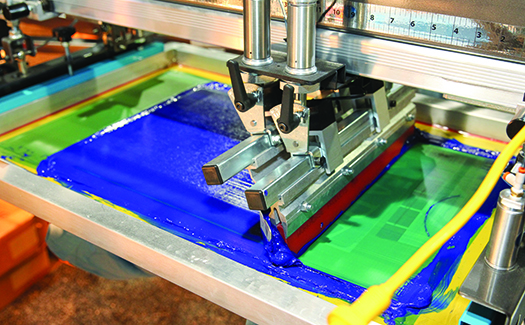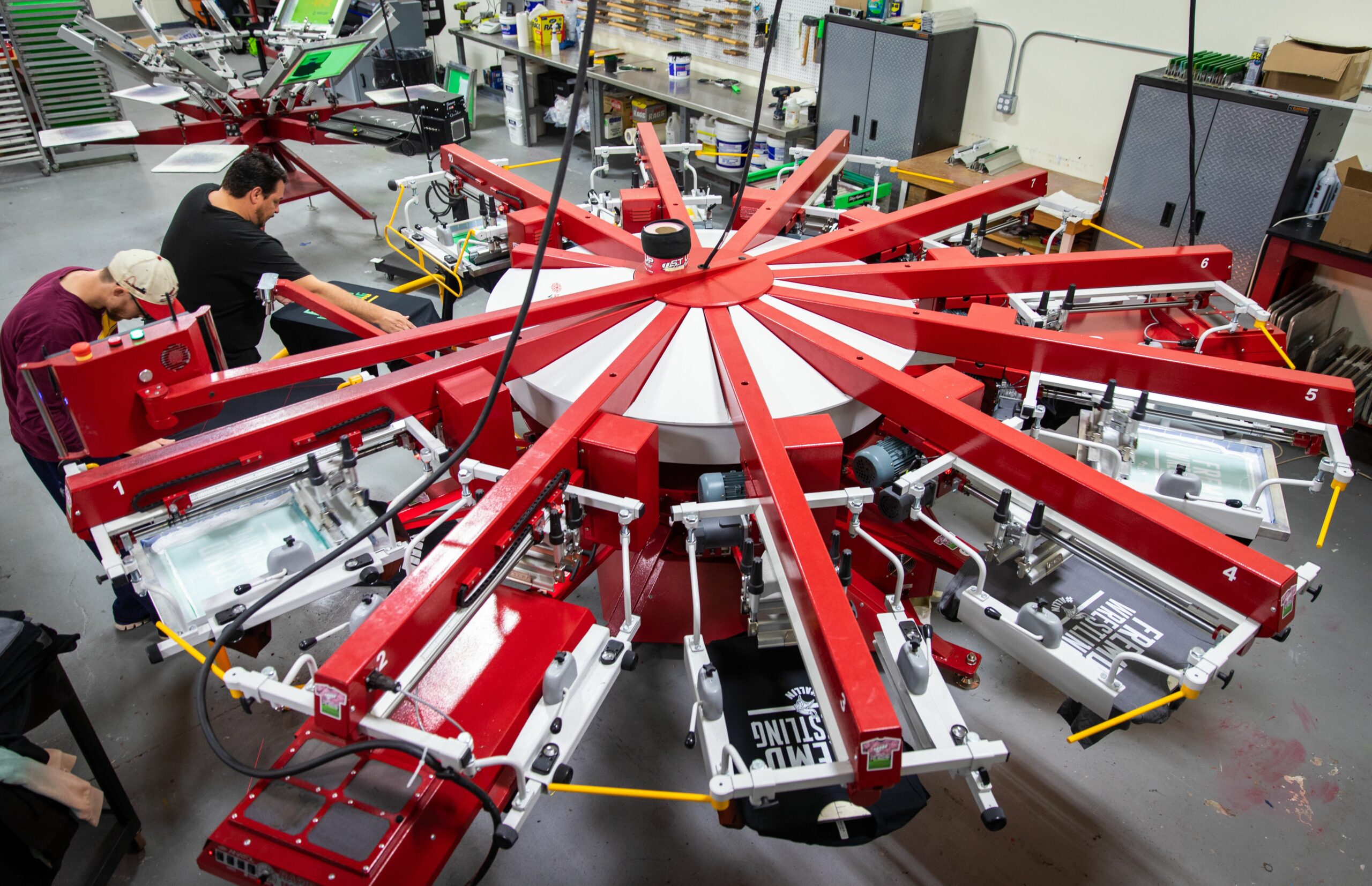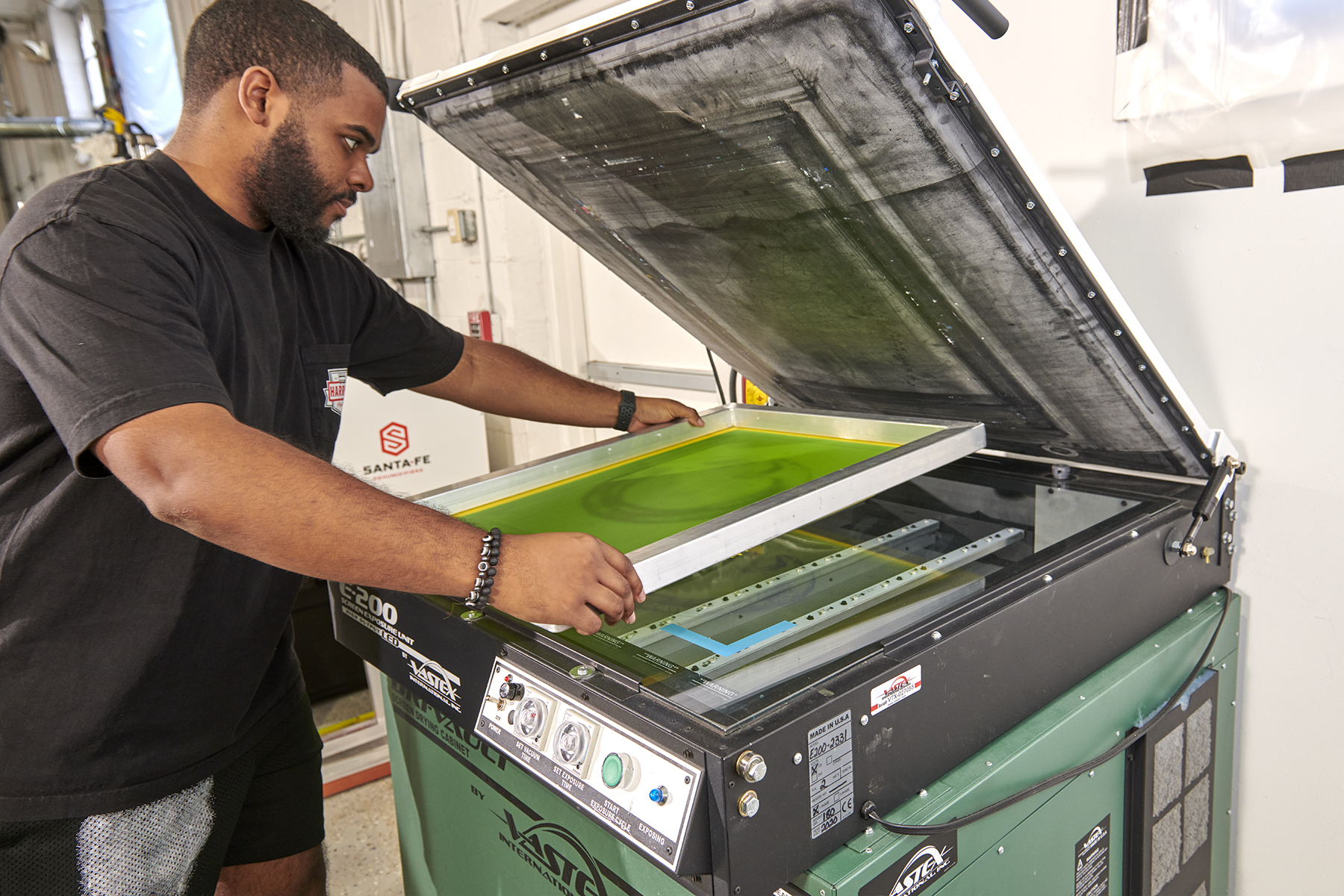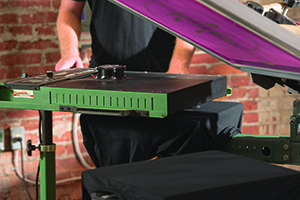March 15, 2016
The consumer and retailers of today’s market have driven the textile embellishment industry to research and develop new technologies to meet demands. Those demands include more environmentally friendly inks and prints with a softer hand than that which traditional plastisol inks can provide.
This situation has many printers researching the new ink technologies, which also have been produced through those same demands. The ink lines offered today are a combination of both new and old technologies. Let’s take a look
Water-Based Inks: These inks have been used from the earliest days of apparel embellishment and were a primary printing media long before the advent of plastisol inks. Today’s high-end water-based ink formulations are more user friendly than their earlier counterparts, with greater performance characteristics from the standpoint of in-screen drying and overall ease of use. They also have improved with regard to vibrancy and laundering. Water-based inks recently have become more popular for their soft-hand characteristics and PVC-free composition.
Water-Based Discharge: These inks are similar to standard water-based inks, but include a discharge additive that allows for the removal of the reactive dye in 100% cotton fabrics. The active ingredient in conventional discharge inks is Zinc Formaldehyde Sulfoxylate (ZFS).
High-Solids Acrylics (HS-As): These represent the newest innovation to water-based textile screen printing inks that allow vibrant prints on dark and light garments. It is important to remember that these inks, as well as standard water-based inks, require proper curing parameters (forced-air dryers) to drive the water content from the ink film to cure it.
Plastisol Inks: The long-time standard for apparel printing, these inks previously contained phthalates, which were deemed harmful. Those products have been replaced and identified as safe via the Consumer Products Safety Information Act (CPSIA). Although some printers have seen product performance issues due to these changes, plastisol as an industry standard remains the most widely used ink system for textile screen printing.
Silicone: This is one of the latest technologies to enter the textile screen-printing market, specifically to combat the ever-growing issue of controlling synthetic polyester dye migration and sublimation. Silicone-based inks allow for the printing of polyester fabrics, and curing parameters are below the sublimation point of the fabric dyes. Silicone inks also have superior elongation characteristics compared to standard plastisols.
All of these options bring a wealth of opportunity to the apparel embellisher, but the one process consideration that often is overlooked is the emulsion system required to meet the production demands of these ink systems. Printers that are looking to either offer a softer hand through one of the new ink technologies or convert to a PVC-free printing system must first identify the correct stencil product to ensure proper screen durability. Understanding the effects of the plasticizers, solvents and water content in these inks will be advantageous when selecting the proper emulsion.
Emulsion Basics
The first thing to know when choosing emulsion is whether the ink contains any solvent or water. While the latter is a given in water-based inks, many of them also contain solvent. This is important, as only certain categories of emulsion provide good resistance to both water and solvents.
There are four primary categories of emulsions: diazo, diazo dual cure, SBQ and SBQ dual cure. They can be classified by the type of sensitizer (diazo or SBQ) and the number of light-sensitive components (one — single-cure — or two — dual-cure).
Most printers know diazo emulsions because they come with a small bottle of powder (sometimes syrup) that typically is dissolved in water and mixed into the emulsion. But many don’t know the difference between single- and dual-cure emulsions, or that SBQ (or “pure photopolymer”) emulsions also come in single-cure and dual-cure formulations.
The primary difference between single- and dual-cure emulsions is that the former has one curable component and the latter has two. Both diazo- and SBQ-sensitized emulsions come in single-cure or dual-cure formulations.
Dual cures (both diazo and SBQ) contain UV-curable resin and single cures (both diazo and SBQ) do not. Dual cures are capable of dual resistance (solvent and water) but it is not a given, while single cures are not. It’s important to note that single cures offer single resistance to either solvent or water, but not both. The pictograms use an icon of the sun to represent each curable component (diazo, SBQ, UV-curable resin) contained within each type of emulsion.
Many T-shirt printers traditionally have used single-cure emulsions but now are using inks that may require both water and solvent resistance, something single-cure emulsions do not necessarily do well. Co-solvent water-based inks (like many of the new HS-As) require not only water resistance, but also solvent resistance from their emulsion. Also, some plasticizers used in new eco-friendly plastisol inks require greater solvent resistance than that which currently is provided by some single-cure emulsions.
Currently, emulsion preferences are trending toward SBQ dual cures. Since they don’t use diazo, they are faster exposing than diazo dual cures and, thus, are better equipped to handle the demand for faster throughput required by busy shops and those investing in CTS equipment with integrated LED exposure systems. Compared to single-cure SBQs, dual-cure SBQs typically have better copying properties (resolution, mesh bridging and edge definition) and solvent resistance.
There’s some confusion about the term “hybrid,” as it relates to describing some (but not all) SBQ dual cures. If UV-curable resin is the defining trait of a hybrid emulsion, then diazo dual cures — which also contain UV-curable resin — also must be considered hybrids.
A hybrid results from the combination of two different elements, which more accurately describes what occurs when diazo is added to either SBQ or SBQ dual-cure emulsion. Adding diazo to SBQ emulsions means essentially combining two different emulsion varieties (diazo and SBQ), which together better fits the hybrid definition and should be easier to understand.
When selecting an emulsion for your facility, it always is important to do your homework to ensure the emulsion you select will yield favorable results with your current exposure system and meet the demands of the ink system you currently have in place or intend to add.
Most single-cure emulsions used by textile printers are plastisol or water-resistant, but lack solvent resistance. This is why it is important to know the composition of your ink and whether it contains a solvent. This often can be done by looking at your ink’s safety data sheets (SDS). Section 9, which lists physical and chemical properties, will disclose whether the ink has a flash point. If it does, it contains some degree of solvent, and a solvent-resistant emulsion will be most compatible.
It also is important to ensure your emulsion will be compatible with your screen cleaning and reclaiming chemistry. Premature stencil degradation or stencil “lock-in” may occur when using incompatible screen openers, ink washes or when incomplete emulsion drying or curing occurs.
Taking time to understand your ink and emulsion composition, and assuring compatibility of each, will pay huge dividends to your bottom line by minimizing re-makes, rejects and downtime while increasing productivity
and profitability.
Rick Davis is a veteran of the textile screen printing and manufacturing industries with a background in apparel manufacturing, plant and contractor management, and screen printing. He currently is an account executive with Nazdar SourceOne. He also is a member of the Academy of Screen Printing and Digital Technology. He can be reached at rdavis@nazdar.com.
Dave Dennings is technical product manager of screen-making products for KIWO Inc., where he oversees product development and KIWO’s applications laboratory. He has worked in the screen-printing industry for 30 years and has served in technical sales positions with KIWO and Sefar. A frequent speaker and contributor to industry publications, Dennings serves on two SGIA committees and co-instructs SGIA’s screen-making workshop. He can be reached at daved@kiwo.com.
March 20, 2024 | Production
As with pretty much any business, one of the keys for apparel and T-shirt decorators running a successful custom screen-printing shop is having the right equipment, first and foremost, the right press, or presses.
FULL STORY
March 15, 2024 | Production
As is the case with flash units and dryers, screen exposure units, computer-to-screen-systems and washout booths are critical to successful screen printing of T-shirts and other apparel
FULL STORY
January 16, 2024 | Production
Go to any industry trade show or visit an actual custom apparel screen-printing shop, and your eyes will naturally be drawn to the press, or presses there. This is true whether the shop in question employs a single manual press or is running multiple autos.
FULL STORY




